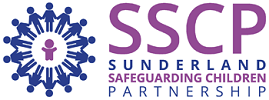
Safe & Together
This training provides participants with an introduction to, and overview of, the Safe & Together Model. The course provides participants with information about creating a domestic violence-informed child welfare system, the principles and components of the Safe & Together Model and information about the framework behind competency-building in child welfare and other sectors around domestic violence.
Our aim in Sunderland, is to equip our workforce with the tools, language and principles needed when working with children and domestic violence.
One of the strengths of the Safe & Together Model is to provide a shared language and approach and improve cross system collaboration. We are welcoming our partners to join us so that we can support the development of a shared approach to this complex and challenging issue.
What issues does Safe & Together aim to address?
Traditionally survivors, usually mothers, have been held responsible for the impact of domestic abuse on their children. There has been a tendency to focus on their decision making, rather than the perpetrator’s pattern of coercive control, as being the primary risk and safety concern for children. Often there are expectations that they will show that they are protective by carrying out drastic actions which significantly impact the child and family functioning, like moving home, ending the relationship or calling the police. Often our systems fail to see the myriad other efforts they undertake to keep their children safe and provide a stable, nurturing and healing environment. Conversely, there has been a lack of accountability for perpetrators in our systems; both as domestic abuse perpetrators and for their role as fathers in families. Without a shared approach to this complex issue, cross system collaboration is challenging, and our siloed responses can fail to provide the outcomes our families need.
These are domestic abuse destructive practices defined as policies and practices that actively harm adult and child survivors of domestic abuse or make it harder for them to access support and assistance.
The Safe & Together Model: Creating Domestic violence-informed practice and systems
The Safe & Together Model aims to help change the conversation about how we work with families impacted by domestic violence perpetrator’s behaviours. It is an internationally recognised suite of tools and interventions designed to help family serving systems’ professionals become domestic abuse-informed. Continuously refined through years of experience of implementing the Model globally this evidence-based practice can help improve competencies and cross-system collaboration. The Safe & Together Model, as a systems change framework, offers language, thinking and practices that help increase accountability for perpetrators as parents, reduce victim blaming and improve outcomes for children and families.
This child-centred model derives its name from the concept that children are best served when we can work toward keeping them safe and together with the non-offending parent - the adult domestic abuse survivor. The Safe & Together Model provides a framework for partnering with domestic abuse survivors and intervening with domestic abuse perpetrators in order to enhance the safety and wellbeing of children.
Virtual Live Remote Training – delivered online by one of our faculty. It will be delivered over two live training sessions, each 3 hours long. Participants must attend both sessions.
There are currently no dates for this event.